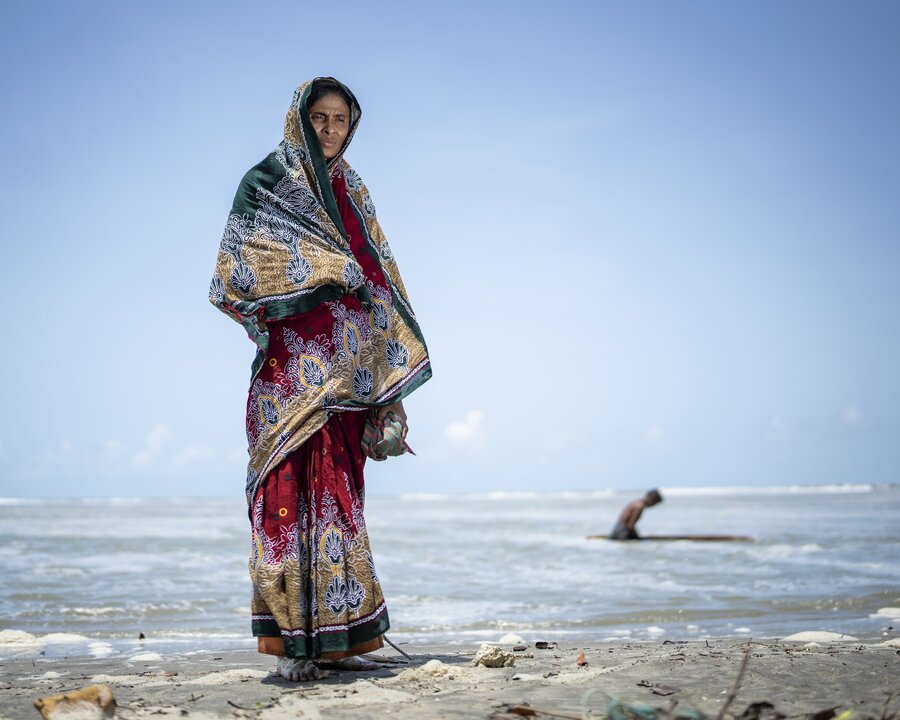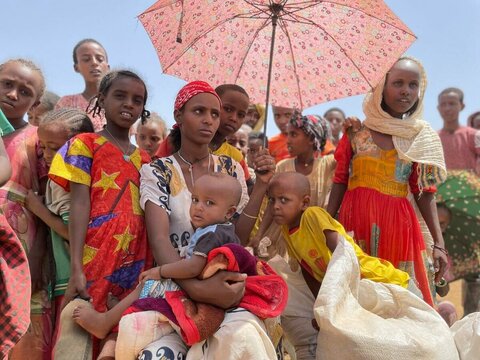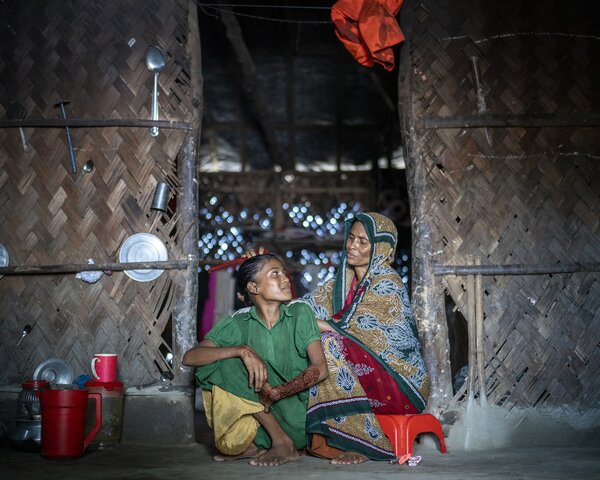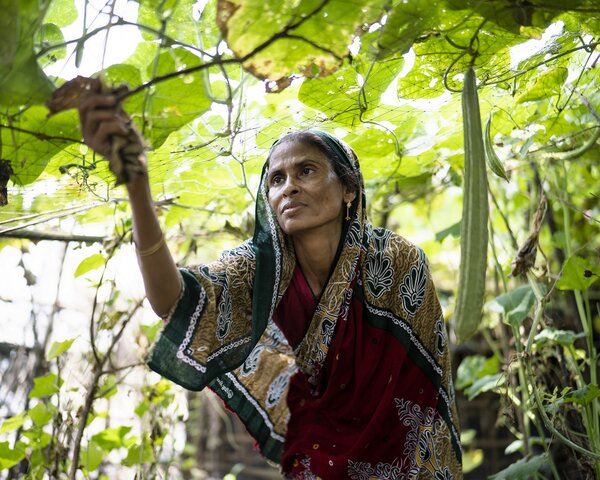Bangladesh: Cash grants and training empower women in the face of climate change

Masuda’s days in Sonadia, a sandy island in the Moheshkhali sub-district of southeastern Bangladesh, always followed the rhythm of the rising tides.
“It scares me when the water enters our house,” she says – when that happens the family is forced to make their way to higher ground.
Where there was once foamy water outside the thin bamboo walls of her home, now the waves often flood her shelter, completely washing her belongings away.
“Sometimes we cannot cook because our utensils and food are taken by the sea,” she says.

Bangladesh is on the front lines of the climate crisis. Most of the country sits only a few feet below sea level and vast swathes of its land get regularly flooded. The Bay of Bengal is one of the most active hurricane regions in the world.
Food security assessments conducted by the World Food Programme (WFP) in December found that one third of families in Moheshkhali and Kutubdia had ‘unacceptable levels’ of food consumption, judged by frequency of intake, nutritional value, and dietary diversity. Eighty percent of families reported they regularly have to buy food on credit.
Record hunger on the rise, says UN study

“We have to rebuild our house every time it is damaged by the sea,” says Safia Begum, who lives with her feet in the sand, right on Kutubdia’s shoreline. “Sea water enters my house twice daily, and the house is completely flooded at least once a year.”
Many islanders who relied on farming have already lost their plots to the sea. Fields located further inland are regularly flooded too. This causes salt to accumulate in the soil and makes it harder to cultivate.

While many families have now fled the two islands to take refuge on the mainland, most often in the seaside town of Cox’s Bazar or in the capital, some are too poor to make the move.
“Where would we go?” says Masuda. “We do not have money. If we had more money, we would have already built a better house”.
WFP provides livelihoods support to the most vulnerable and hard-to-reach women in Moheskhali and Kutubdia, helping to diversify their economic activities, training them on saline-resilient agriculture as well as basic business skills and financial literacy. Upon completion of the trainings and submission of a business plan, participants get a grant from WFP to purchase livestock or expand their agricultural production.
Kutubdia and Moheshkhali are part of the coastal Cox’s Bazar area, which happens to be one of the most active cyclone areas in the world. More than 80 percent of families surveyed by WFP on the two islands in December reported being affected by a disaster in the 12 months prior to the survey; mainly storms and flash floods.


Cyclone shelters – six of which were built or renovated by WFP on the two islands – have helped to reduce fatalities and protect livestock. But the cyclones also cause stronger waves to hit the shores.
Safia used her grant to buy goats and chickens to raise. She received financial literacy trainings and gets a monthly allowance to afford food while she invests in her growing business. “By raising and selling my animals, I am hoping to get enough money to build a house somewhere better, and live a decent life,” she says.
Masuda, in turn, has learned how to grow vegetables in sacks, which protects the soil from the salt water. She’s also picked up how to use natural fertilizers. Her vegetables helped her become the main breadwinner of her family of five, which once depended solely on her husband’s scant fishing haul. “We live better than before,” she says. “But we still need help”.
Each month WFP helps families in Bangladesh to rebuild their livelihoods and to stay safe when disasters strike. WFP is grateful for the support from donors but requires US$20.67 million to save and change the lives of families across the country over the next four months.
